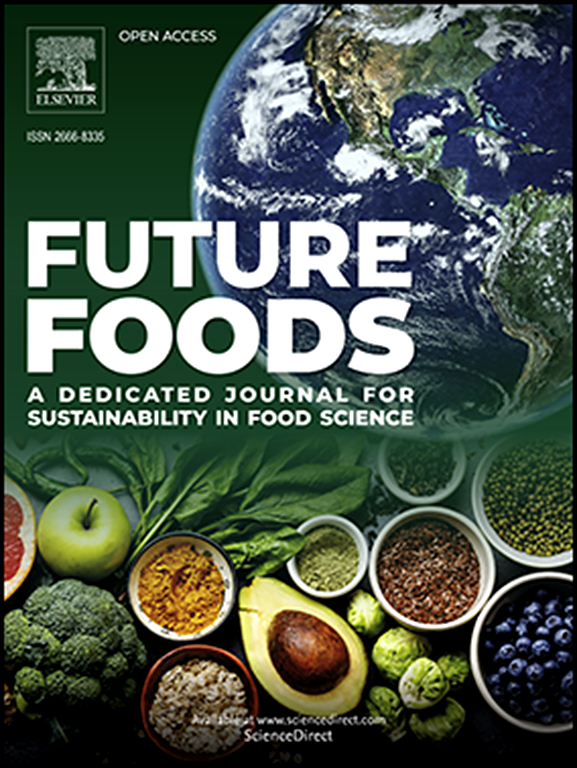食品系统中的脂肪替代品:关注食品中的成分、制造方法和应用
IF 8.2
Q1 FOOD SCIENCE & TECHNOLOGY
引用次数: 0
摘要
脂肪能够赋予不同食品重要的感官特性,如颜色、味道、质地和气味,从而影响消费者的整体接受度。在肉类、乳制品、调味品、烘焙食品和油凝胶等各种商品中,脂肪的含量都很高。为了降低高含量并保持消费者的接受度,通常会使用脂肪替代品,如蛋白质、复合碳水化合物、脂类及其组合,这些替代品已被广泛研究用于各种用途。每种代脂都有其独特的特性,会影响食品的质量,其中加工方法起着重要作用。乳液和水胶体方法以及酶法合成三酰甘油的方法被推荐用于乳制品、加工奶酪和低脂肉制品。基于最终产品酶法缩合的方法也可以复制天然脂肪(不含反式脂肪)的特性,而交联法则推荐用于糕点产品。由此可见,脂肪替代品在应用于食品时会影响其理化和感官特性,因此需要选择适当的成分和方法。因此,本综述旨在对产品中使用的脂肪替代品成分和方法进行深入评估,将其作为一种有益健康的营养策略。本文章由计算机程序翻译,如有差异,请以英文原文为准。
Fat replacers in food system: A focus on ingredients, fabrication methods, and applications in food products
Fat is capable of imparting important sensory properties such as color, taste, texture, and odor to different foods, affecting overall consumer acceptance. There is a significantly high amount of fat in a diverse assortment of commodities, including meat, dairy, sauces, baked food, and oleogels. To reduce the high content and preserve consumer acceptability, fat replacers are often used such as proteins, complex carbohydrates, lipids, and their combinations, which have been widely investigated for use in various applications. Each type of replacers has unique characteristics that impact the quality of food product, with the processing methods playing a significant role. Emulsion and hydrocolloid methods, as well as the enzymatic synthesis of triacylglycerol, are recommended for dairy products, processed cheese, and low-fat meat products. Methods based on the enzymatic intersterification of the end product can also replicate the characteristics of natural fats (without trans) while crosslinking is recommended for pastry products. This shows the need to select the appropriate ingredients and methods for fat replacers which affect the physicochemical and sensory characteristics when applied to food products. Therefore, this review aimed to provide an in-depth assessment of fat replacers ingredients and methods used in products as a nutritional strategy with beneficial health consequences.
求助全文
通过发布文献求助,成功后即可免费获取论文全文。
去求助
来源期刊

Future Foods
Agricultural and Biological Sciences-Food Science
CiteScore
8.60
自引率
0.00%
发文量
97
审稿时长
15 weeks
期刊介绍:
Future Foods is a specialized journal that is dedicated to tackling the challenges posed by climate change and the need for sustainability in the realm of food production. The journal recognizes the imperative to transform current food manufacturing and consumption practices to meet the dietary needs of a burgeoning global population while simultaneously curbing environmental degradation.
The mission of Future Foods is to disseminate research that aligns with the goal of fostering the development of innovative technologies and alternative food sources to establish more sustainable food systems. The journal is committed to publishing high-quality, peer-reviewed articles that contribute to the advancement of sustainable food practices.
Abstracting and indexing:
Scopus
Directory of Open Access Journals (DOAJ)
Emerging Sources Citation Index (ESCI)
SCImago Journal Rank (SJR)
SNIP
 求助内容:
求助内容: 应助结果提醒方式:
应助结果提醒方式:


